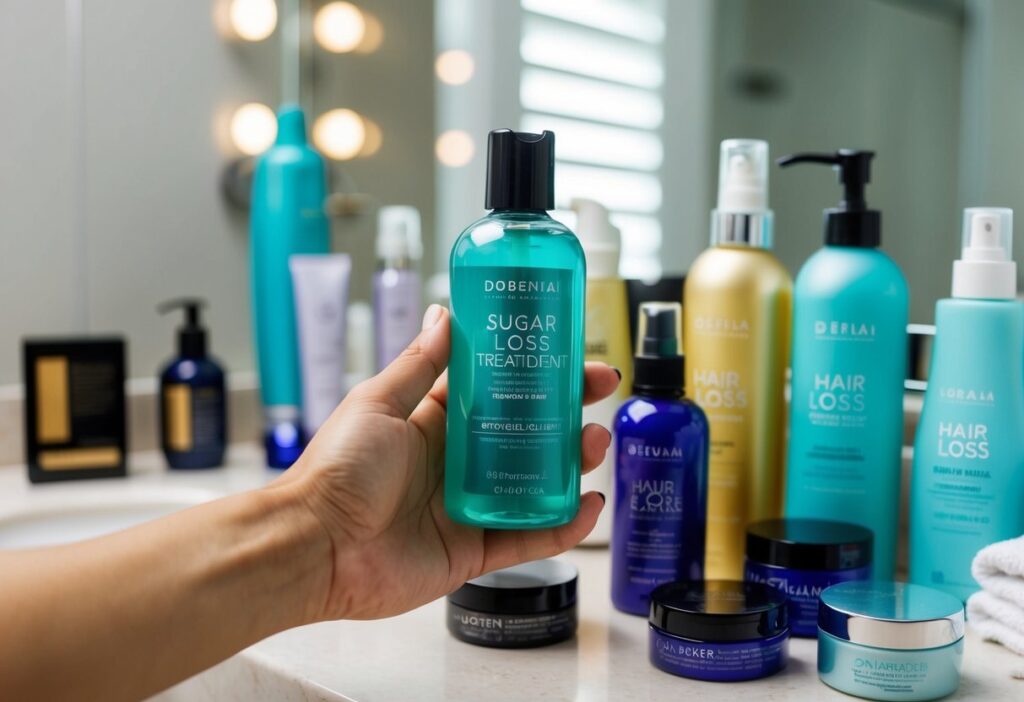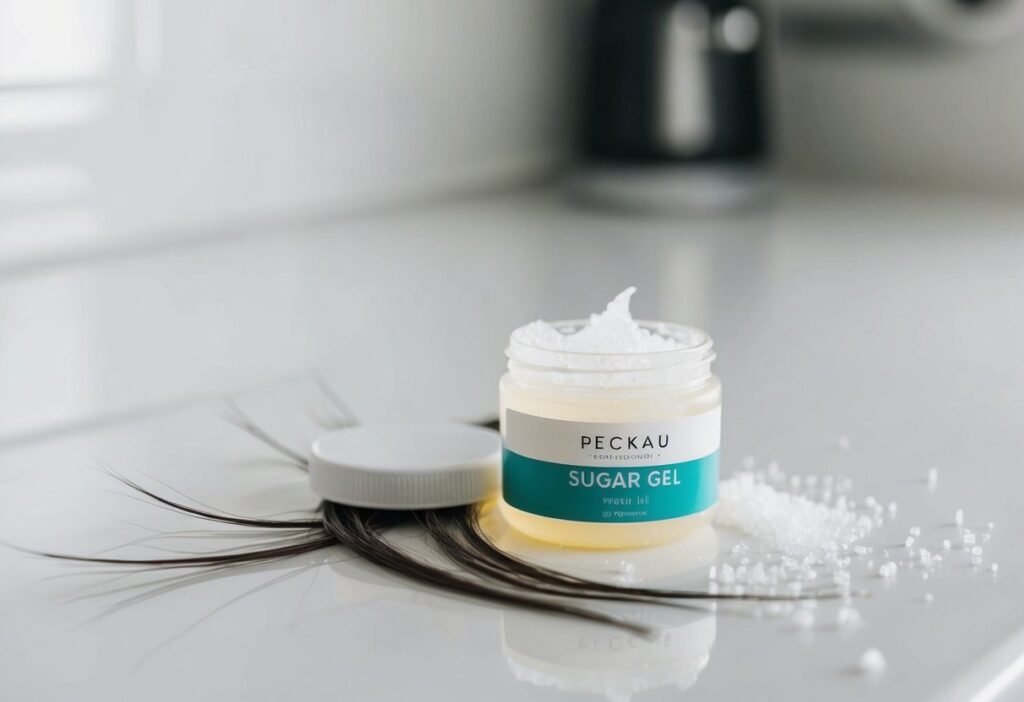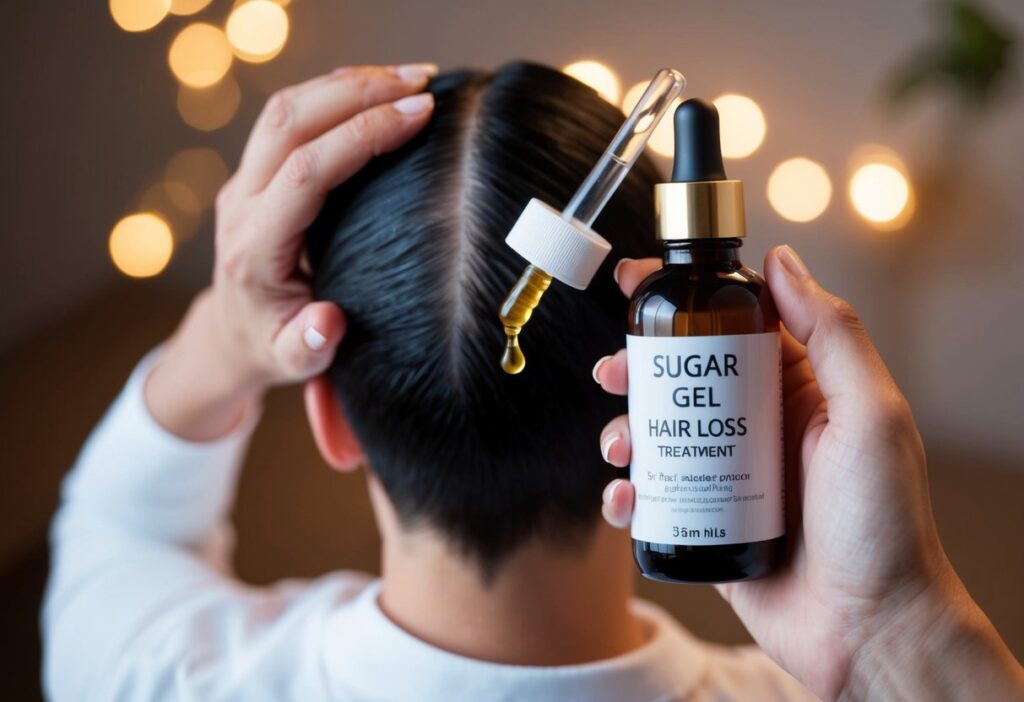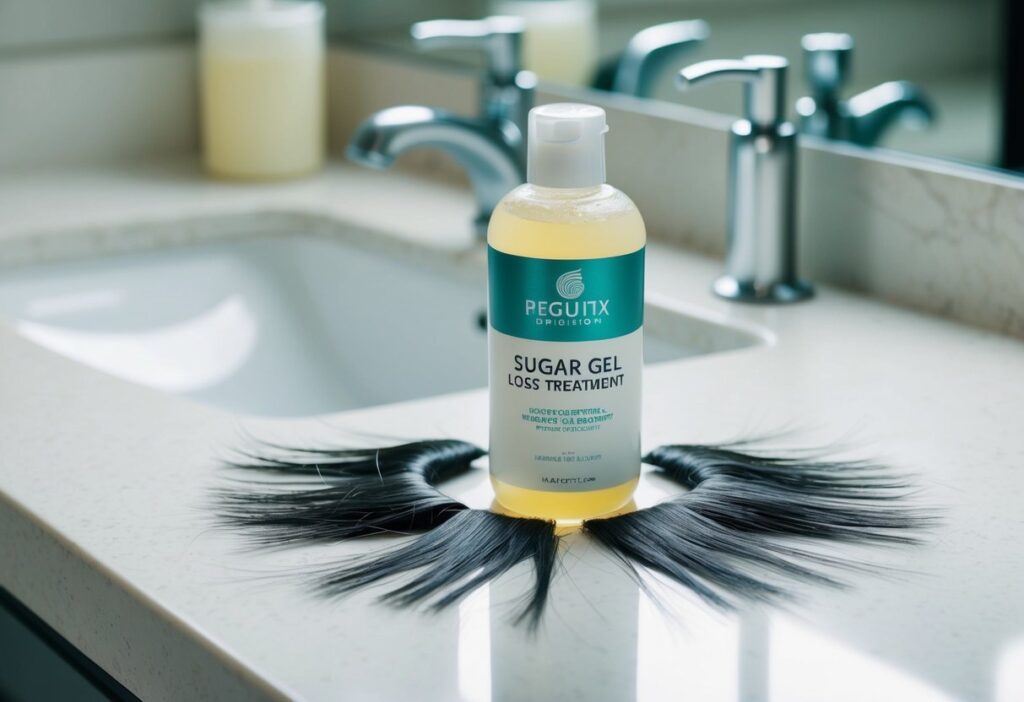Contents
A new hair loss treatment is making waves in the scientific community. Researchers have stumbled upon an exciting discovery – a sugar gel that triggers robust hair regrowth. This breakthrough offers hope to millions struggling with hair loss.

The sugar gel, containing deoxyribose, has shown promising results in promoting hair growth comparable to existing treatments like minoxidil. In studies with mice, both the sugar gel and minoxidil achieved 80 to 90 percent hair regrowth. This unexpected finding opens up new possibilities for those seeking natural alternatives to combat hair loss.
Scientists are now exploring the potential of this sugar gel as a treatment option for various types of hair loss. While more research is needed, the initial results are encouraging. This discovery may pave the way for new, effective hair loss solutions in the future.
Key Takeaways
- A sugar gel containing deoxyribose has shown promise in promoting hair regrowth.
- The gel’s effectiveness is comparable to existing hair loss treatments like minoxidil.
- This breakthrough may lead to new natural treatment options for people experiencing hair loss.
The Science Behind Sugar Gel

A new hair loss treatment using sugar gel shows promise. Scientists found it can regrow hair in mice with amazing results. Let’s look at how this gel works and why it might help people with hair loss too.
How Sugar Gel Stimulates Hair Regrowth
The sugar gel triggers robust hair regrowth in mice with male pattern baldness. It works as well as minoxidil, a popular hair loss medicine. In tests, both the sugar gel and minoxidil helped regrow 80-90% of hair in bald mice.
Scientists aren’t sure exactly how the gel works yet. But they saw more blood vessels grow near treated areas. This might help feed hair follicles and make them healthier.
The gel also seems to wake up sleeping hair follicles. It tells them to start growing hair again. This is exciting because it could help people who have lost their hair get it back.
The Role of Deoxyribose Sugar in Hair Treatment
The key ingredient in the gel is deoxyribose sugar. This is a type of sugar found naturally in our bodies. When put on the skin, it seems to have special effects on hair.
Researchers found this by accident while studying how wounds heal. They noticed mice grew back fur really fast when deoxyribose was applied.
The sugar might help hair follicles make more energy. This could make them stronger and able to grow more hair. It also seems to boost proteins that help hair grow.
Scientists think this sugar gel could be a new way to treat hair loss in humans too. But they need to do more tests to make sure it’s safe and works well for people.
Sugar Gel as a Treatment Option

A new sugar-based gel shows promise for treating hair loss. This breakthrough may offer an effective alternative to existing options.
Comparing Sugar Gel to Other Hair Loss Treatments
The sugar gel treatment uses deoxyribose, a type of sugar. It has shown results similar to minoxidil, a common hair loss medicine.
In studies with mice, both the sugar gel and minoxidil led to 80-90% hair regrowth. This is exciting news for those looking for hair loss solutions.
The sugar gel may have fewer side effects than other treatments. It’s a simple substance that occurs naturally in the body.
Current options like minoxidil can cause scalp irritation in some people. The sugar gel might be gentler on the skin.
Prospects of Sugar Gel in Treating Male Pattern Baldness
Male pattern baldness is a common form of hair loss in men. The sugar gel shows potential in treating this condition.
Researchers tested the gel on mice with a similar type of hair loss. They saw quick and significant fur regrowth.
The gel seems to work by helping create new hair follicles. It also makes existing follicles stronger and healthier.
If human trials go well, this could be a big step forward. Many men struggle with hair loss and want better treatment options.
The sugar gel is easy to apply and might be cheaper than some current treatments. This could make it more accessible to many people.
Clinical Trials and Research

Scientists have made exciting discoveries about a sugar gel that may help treat hair loss. Studies at universities in different countries show promising results for regrowing hair in both animals and humans.
University of Sheffield and Comsats University Studies
Researchers at the University of Sheffield tested a gel containing deoxyribose sugar on mice with male pattern baldness. They took photos over 20 days to track the progress. The results were impressive – the sugar gel worked as well as minoxidil, a common hair loss treatment.
At Comsats University in Pakistan, scientists did similar experiments. They found the deoxyribose gel helped regrow hair and improved blood flow to hair follicles. This is important because healthy blood supply helps hair grow.
Human Trials
After success with mice, researchers moved on to human trials. The trials are ongoing and results awaited.
Application and Usage

Once approved and launched, the sugar gel hair loss treatment is easy to use at home. It needs to be applied regularly for the best results.
Perhaps the use the sugar gel once or twice daily may be recommended for best results.
Treatment for at least 6 months may be required to see any positive results.
Potential Side Effects and Considerations

Unlike some other hair loss treatments, it doesn’t appear to cause major side effects. The sugar used is naturally found in the body, which may help explain why it’s well-tolerated.
Some people might experience mild skin irritation where the gel is applied. This could include:
- Redness
- Itching
- Slight swelling
These effects are usually temporary. If they don’t go away, it’s best to talk to a doctor.
Future of Hair Loss Treatments

New hair loss treatments are on the way. Some use cutting-edge science, while others look to nature for answers. These options may give hope to people struggling with hair loss.
Sugar gel hair loss treatments have generated a lot of interest. People want to know about user experiences, potential side effects, expected results, and how this new approach compares to other hair regrowth options.
